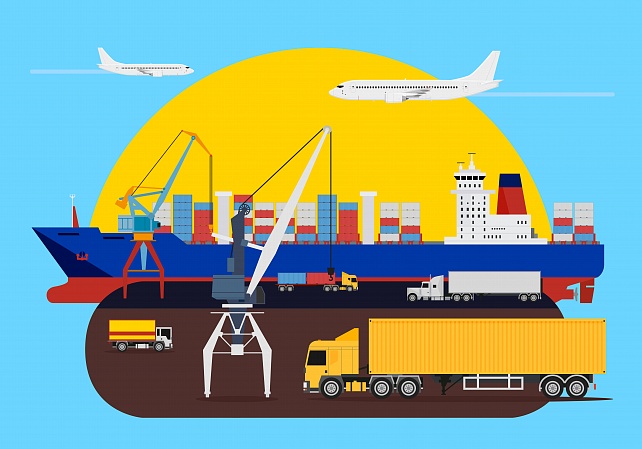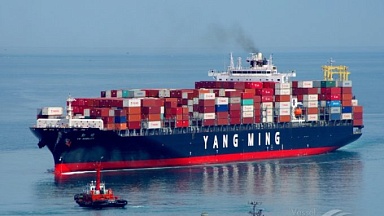Already sky-high ocean freight spot rates were pushed even higher this week, spiking to new highs on transpacific services with a 25% rise from Asia to the US East Coast taking prices to more than $9,000/FEU, and a 15% increase to the US West Coast — which crossed the $6,000/FEU mark, according to the latest figures from Freightos.
Prices from Asia to North Europe and the Mediterranean also both increased by more than 5% and passed $11,000/FEU — with surcharges and premiums often meaning that the actual freight rate can be currently thousands more, Freightos highlighted.
And with peak season on its way, it once again looks like things will continue to get worse before they get better.
Like others, Freightos highlighted that the partial closure for more than two weeks of southern China’s key Port of Yantian — responsible for about 25% of US-bound, Chinese origin ocean volumes — was contributing to the spike in prices, with the container terminal operating at only 30% capacity for two weeks now following a coronavirus outbreak.
According to the weekly report on Freightos’ FBX real-time daily rates — based on current rates being used by global logistics providers — Asia-US West Coast average prices reached a new weekly high of $6,341/FEU — 245% higher than the same time last year. And Asia-US East Coast prices spiked to a new record of $9,317/FEU, and are 250% higher than rates for this week last year.
Freightos observed that the partial closure for more than two weeks of southern China’s key Port of Yantian has created a queue of ships that could wait 16 days to dock. And with the nearby ports of Shekou and Nansha unable to handle all the impacted containers, some carriers are skipping not only Yantian but also Shekou to avoid days of delays.
Robert Khachatryan, COO of Freight Right Global Logistics, a freight forwarder that offers services on theFreightos.com freight booking platform, explained that the latest crisis is also overwhelming other modes as some shipments «are being trucked to other ports at significant cost.» And some industry commentators believe the slowdown could impact ocean logistics even more significantly than the disruptions caused by the blockage of the Suez Canal in March and April, including an eventual surge of volumes at US and European destinations.
Freightos noted that «the impact of this latest crisis will be amplified because the industry is already spread so thin. Though improved, delays at LA/Long Beach persist, and some carriers are now avoiding alternative ports like Oakland because they are no better».
And smaller recent disruptions — like the collapse of a gantry crane at the Port of Kaohsiung in Taiwan, and a climate protest at the port of Hamburg — are also causing delays and tying up capacity, with an estimated 5% of all ocean capacity currently waiting outside a port.
Backlog of cargo
Meanwhile, US freight forwarder Flexport’s Ocean Freight Market Update this week highlighted that Asia to North America (Transpacific Eastbound) schedule reliability «remains a challenge, as carriers continue to grapple with delayed berthing appointments at extremely congested ports like Oakland». And at origin, Flexportobserved that Covid outbreaks causing disruptions to labour forces were prompting some strings to omit calling Yantian, «likely causing a backlog of cargo for the next few weeks».
The forwarder added that «limited amount of available space, high number of blank sailings, disruptions due to congestion and ad-hoc port calls/omissions, and strong demand together mean big challenges on TPEB». With a 1 June general rate increase (GRI) already implemented, it said a further GRI on 15 June was expected. And with capacity and equipment «critical», and experiencing «severe undercapacity», it is recommending customers to «book at least 4-6 weeks in advance of CRD».
And on Asia to Europe (Far East Westbound), it said the «space and equipment crunch continues», with market demand exceeding supply, noting: «There are more blank sailings coming up in June/July, and no improvement in equipment status». Flexport said carriers «have a sizable backlog and are not able to accommodate their booking intake», with Yantian port restrictions and congestion causing further disruption.
It said rates had seen a «significant increase» on 1 June, with a further increase expected on 15 June and in July.
As with the TPEB market, it said there was an «extremely tight space situation», with «severe equipment shortage across all Asia origins». Recommending «advance booking of at least 4-5 weeks prior CRD, Flexport urged customers to «consider the limited premium options» and to «adopt flexibility on equipment substitution».





